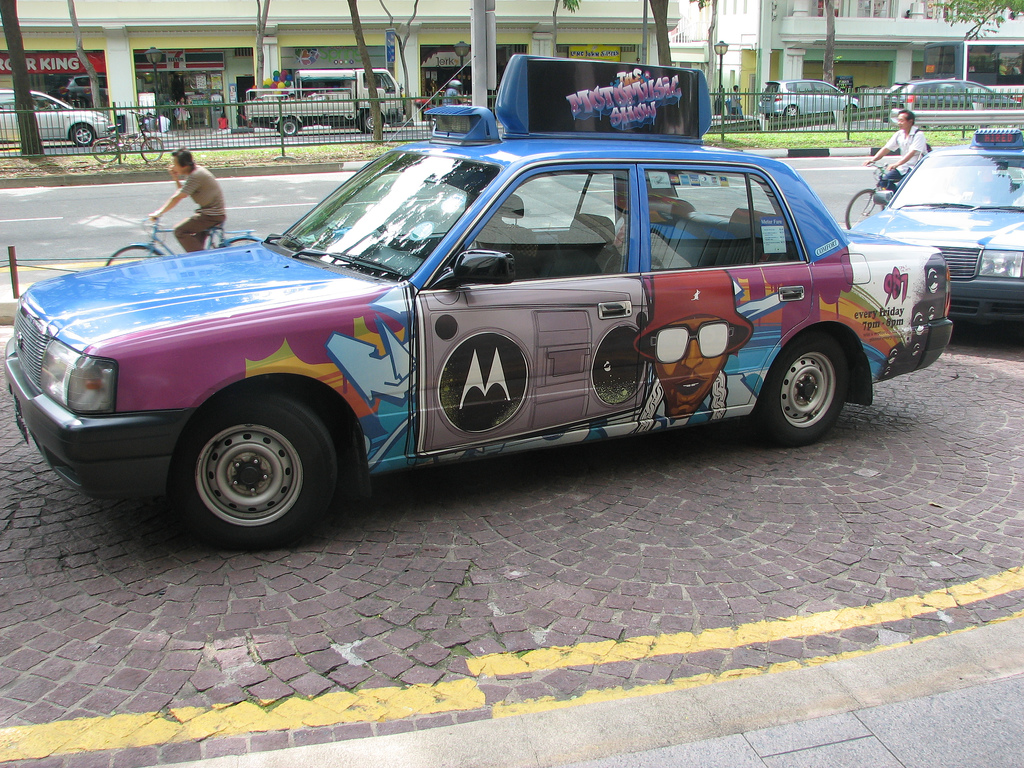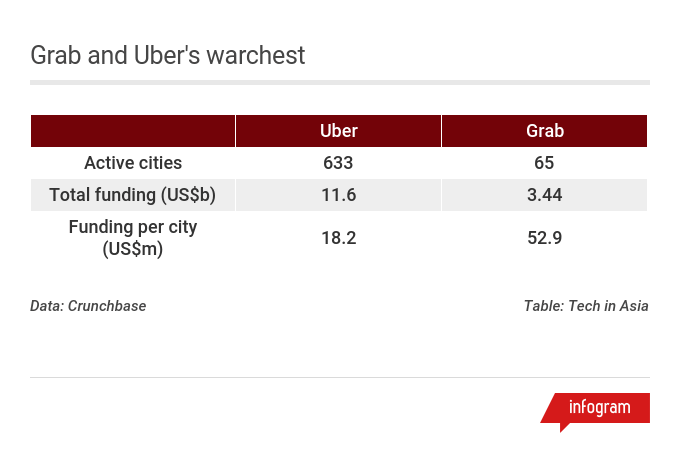
Image credit: Stephen Barnett
ComfortDelGro, Singapore’s largest taxi operator, is in a bad spot. Its stock price plummeted, wiping US$272 million off its market cap.
The cause? On September 3, Grab announced givingComfortDelGro cab drivers a discount of US$37 per day on car rentals, or US$1,110 per month, if they switch to any of its taxi partners: TransCab, Prime, SMRT, or Premier. Those who switch to a private-hire car will get an even bigger discount.
This followed an announcement from ComfortDelGro that it was in talks with Uber on a potential tie-up.
What’s Grab up to?
The rationale behind Grab’s move is clear; with a single stroke it seeks to cripple ComfortDelGro’s growth and by extension, Uber’s. Their combined network loses utility with fewer cars. As a result, consumers find it more difficult to get a ride. The move hampers their ability to serve customers who simply want a hassle-free and fast means of transport.
This hinders ComfortDelGro’s ability to stem its worsening income and balance sheet:


Contrasted against this tide of red ink is Grab receiving US$2 billion in investment from Softbank and Didi Chuxing.
The picture is clear. ComfortDelGro is losing cash and its ability to make more of it. Grab is raising tons of cash and investing heavily in its ability to make more.
What does this mean for ComfortDelGro-Uber?
To begin with, the timeline is now tighter than before to formalize an agreement that will stem the outflow of drivers. It also weakens ComfortDelGro’s negotiating position against Uber. Uber too will now face the additional headache of having to mirror Grab’s rental discounts or initiate an equally costly move to entice drivers to stay.
The options ComfortDelGro faces are stark – partner or sell. Unlike Grab, which is still a privately held company answerable to only a few investors, ComfortDelGro is a publicly-traded company. Its finances have to be made public (which gives Grab an asymmetric advantage in information) and it has to answer to shareholders who are hungry for faster and higher returns.
Thus ComfortDelGro needs to show that it’s making a move to increase sales (through a partnership) or that it has decided to quit the field to focus on its other profitable businesses such as SBS Transit by selling its fleet to Uber.
Given ComfortDelGro’s status as a government-linked company, we also can’t rule out the possibility of a “white-knight defense” – a well-heeled investor like Temasek with billions in reserves moving in to make an investment.
What would Uber do?
The stakes have changed for Uber. Partnering with a fleet would allow Uber to increase its asset base without having to make corresponding heavy capital expenditures. Now, Uber has to effectively subsidize its partner’s operations.
Bloomberg recently published an opinion stating that Uber cannot afford the fall of Singapore. Strategy is the art of practicing the feasible to achieve the desirable. So the question is, can Uber continue the fight?

While the above data does not take into account the varying operating costs across cities, e.g. Singapore’s high vehicle costs, it gives us a rough benchmark of how much they are each able to spend.
Further, Uber has yet to make the economics of ridesharing work for them. While this is a challenge Grab faces as well, its activity in fewer markets exposes it to less operating losses.
Uber is at a disadvantage to Grab in maintaining its foothold, much less expanding its market share. And the choices facing the respective CEOs are quite different. Grab’s Anthony Tan needs to consider which markets to expand to, while Dara Khosrowshahi needs to consider which markets he is prepared to lose.
ComfortDelGro’s numbers converted from Singapore dollars. US$1 = S$1.35.
This post Opinion: With Grab’s latest move, Comfort and Uber face stark choices appeared first on Tech in Asia.
from Tech in Asia https://www.techinasia.com/comfort-vs-grab
via IFTTT
No comments:
Post a Comment